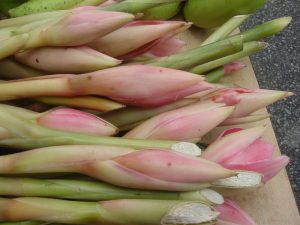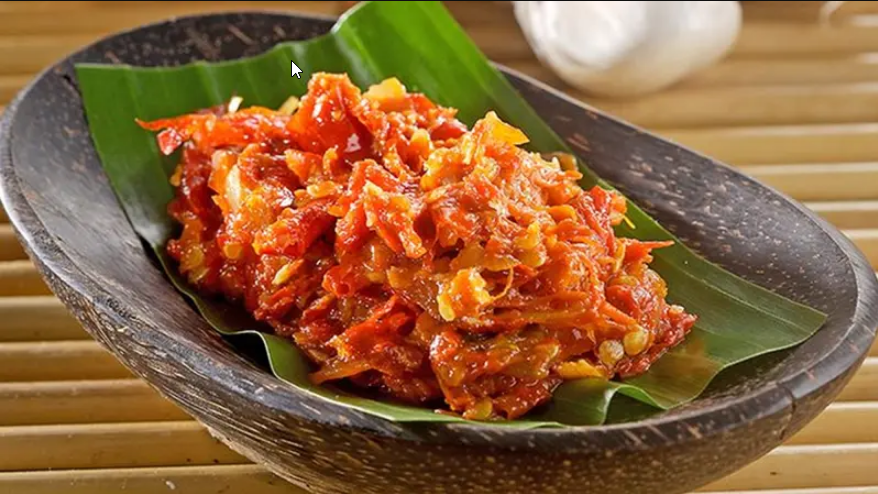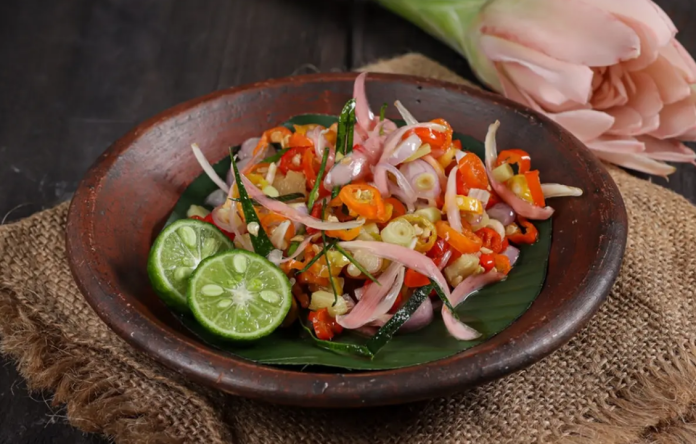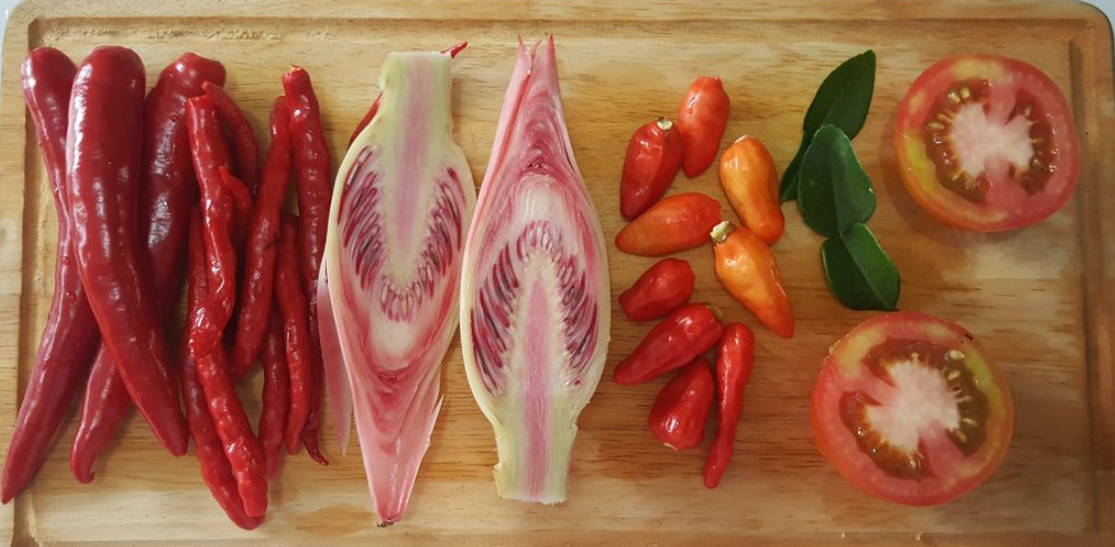Sambal Kecombrang (Torch Ginger Sambal)
Sambal is a beloved culinary tradition in Indonesia, a country that thrives on the rich tapestry of flavors. The diversity of sambal varieties mirrors the nation’s vibrant culture – some offering a hint of sourness, others a touch of bitterness, and a few leaning into sweetness. But for most Indonesians, the common denominator is a shared love for fiery spiciness. The secret to taming the heat? Removing the seeds from the chilies for those seeking a milder experience, or keeping them intact for those who crave more fire.
Enter Kecombrang, a botanical marvel known as Etlingera elatior, or by its many regional aliases: Honje, Kantan, Torch Ginger, Ginger Flower, Red Ginger Lily, Torch Lily, Wild Ginger, Wax Flower, and Siantan. Kecombrang is more than just a pretty face in the plant kingdom, reaching impressive heights of over six meters. Primarily sought for its unopened flower buds, this botanical wonder adds a tantalizing twist to Southeast Asian cuisine, especially in Malaysia.

Kecombrang flower buds are a treasure trove of flavors. They infuse dishes with a unique combination of tartness, pepperiness, and a hint of florals. This versatile ingredient often makes appearances in salads, curries, soups, and fried rice, lending a distinctive zing to every bite.
Beyond its culinary prowess, Kecombrang also adds a touch of elegance as ornamental blooms in Southeast Asia. They are frequently featured in tropical bouquets at festivities and grace homes as decorative accents.
Besides their culinary allure, Kecombrang flower buds bring health benefits to the table. Rich in fiber, vitamin C, and antioxidants, they also boast anti-inflammatory properties, making them a holistic addition to the kitchen.
Eating Kecombrang flowers is a sensorial journey. Their fragrance is captivating, their taste, tangy and fresh. First-timers might find the experience unusual, but soon enough, they fall under the flower’s spell, craving it time and again.
Kecombrang frequently finds its place in a variety of Indonesian dishes. Sumatrans turn these flower buds into chili sauce or incorporate them into their signature curries. In West Java, Kecombrang becomes a delightful side of fresh vegetables paired with spicy chili sauce. Banyumas features steamed Kecombrang in their pecel, while in Medan find the deliciously tangy karo vegetables. In South Sulawesi, Kecombrang elevates yellow sauce for fish dishes. Across borders, in Malaysia and Singapore, Kecombrang is an indispensable ingredient for preparing laksa, a regional favorite.
So, why not bring the magic of Kecombrang to your daily meals with a delightful Kecombrang Sambal? To craft this flavorful side dish, you’ll need some basic ingredients, including Kecombrang flowers, shallots, chilies, and a medley of seasonings. For an extra zing, consider adding lime juice, lemongrass, or lime leaves.
How to Make Kecombrang Sambal
Follow these steps and savor the deliciousness of Kecombrang Sambal in the comfort of your own home:
Ingredients
- 1 young flower of torch ginger sliced thinly
- 1 tomato
- 12 shallots
- 6 garlic cloves
- 10 red curly chillies
- 10 green chilles (cabe rawit)
- 1/2 tsp salt
- 1/4 tsp sugar
- 1 tbsp oil
- 4 lime leaves
- 1 lemongrass stalks, take the middle
- stock powder (optional)
Option 1: Sambal kecombrang matah
- Slice all the ingredients thinly, put them in a bowl.
- Heat cooking oil, Pour into the chopped ingredients.
- Add pepper, salt and stock powder. Stir well. Serve.
Option 2: Sambal kecombrang Ulek
- Slice all ingredients roughly
- Heat oil in a pan and add all ingredients till cooked.
- Add salt, pepper and stock as required
- cool and blend coarsely
- Add some lime juice and salt to taste
Serve and enjoy!







